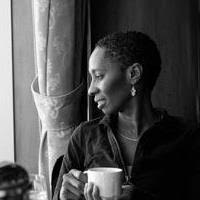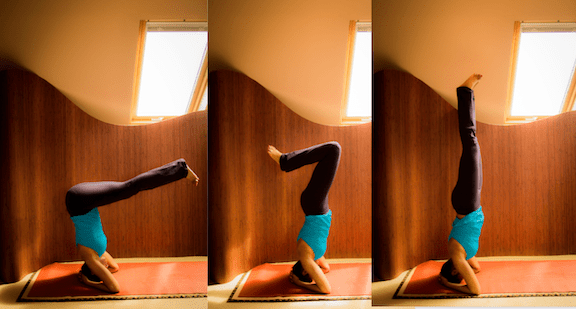by Saeeda Hafiz
It was 1991, in Pittsburgh Pennsylvania and I was about to go on my first yoga vacation. None of my friends, nor I for that matter, have ever heard of such thing. But I was very excited to make such a thing happen. I enthusiastically told my friend, George, about it. “I am going to California for a yoga vacation. This place sounds awesome.” I read him the brochure. While he listened, I described the schedule to him. “At the ashram, we’re expected to wake up at 5:30 a.m. to the sound of a gong. Then go to meditation starts at 6:00 a.m., followed by a two-hour morning yoga class. After the class we are offered a full-service buffet vegetarian brunch. Then we’re assigned a community service project. When our chores are done, we have four hours of free time. One could choose such activities as swimming in the pond or hiking a trail. At the end of the day, there’s another two-hour yoga class, buffet dinner, and, last, a two-hour session of meditation and chanting. Then, lights out by 10:00 p.m.”
“Eeewww,” he groaned. “You’re *&%$ weird. Who would go on vacation to get up earlier than they do for work? That doesn’t sound like vacation; that sounds like prison.” I was disappointed in his reaction, because, for some reason, this was very exciting to me.
I left Pittsburgh, boarded the plane to California. When I arrived at the SFO airport the ashram sent a hippy looking station wagon to pick me up. Well over two hours later, we arrived at the Sivananda Ashram in Grass Valley CA, in time for a small snack, a quick tour of the essentials and then bedtime.
The next day I experienced the schedule that I had described to my friend, George. The gong woke me up at 5:30 a.m., and by 6:00 a.m. I was wrapped in a blanket, meditating, or more accurately, just sitting there cross-legged with my eyes closed. At 6:30 a.m. I poorly chanted strange Sanskrit words from a songbook. At 7:30 a.m. I was listening to a spiritual lecture on Hindu mythology. And by 8:00 a.m. I was practicing Hatha yoga on a beautiful hardwood floor. This place felt weird, but also like an honest place for me to be. I could live like this, I thought.
The smell of incense swirled through the air, the color saffron radiated through the ashram like the sun, and I got the feeling everyone was actively practicing to become their spiritual best. I felt like I was doing something good for myself, even though it seemed much like a cult—at least according to the pop cultural definition of one. There were guru pictures on the walls, we chanted words like “Hare Krishna,” and at 10:00 a.m. we ate vegetarian food communal style. More than a few times I thought, if George could see me now, he would definitely think, “You’re *&^%$ weird.”
From 11:00 a.m. to noon I was doing assigned chores in the kitchen, chopping vegetables and washing dishes. We all did whatever needed to be done.
From noon to 4:00 p.m. I had free time in the sun by the pond and talked to my fellow yogis and spiritual enthusiasts.
From 4:00 to 6:00 p.m. I was in my second Hatha yoga class of the day. To my amazement, for the first time, I did a headstand. I felt terrific. In truth, I felt better than those around me struggling to get it right. Holding my headstand, I felt like saying, “Hey, look at me. Watch me hold the posture that is considered the king of postures.”
In this upside-down pose, I thought, “George probably can’t do this.” Then I started to wobble and had to come down to rest in child’s pose. In child’s pose, my mind drifted into thinking that I had come a long way from my childhood. I was in sunny Grass Valley, California on a yoga vacation, and not trapped in my old neighborhood with no college degree, agonizing over which boy should love me.
As I transitioned from headstand to child’s pose and back into headstand several times, a whole host of memories were triggered. I constantly compared my present-day life to the collection of past experiences, growing up in poverty, family domestic violence, creating an opportunity to go to college, transiting from high school friends to college friends, having more and more exposure to wealthier people, and more importantly, people who just had different thoughts from what was considered normal.
I came out of the last headstand, feeling exhausted and invigorated at the same time. I rested in child’s pose one more time, and then I sat up, resting on my heels. Then continuing to move through this yoga class one posture at a time, while new memories surfaced with each pose.
At the end of yoga class, we all set ourselves up for the 20-minute relaxation pose—Savasana. During this time, the alchemy of my intimate relationships with each person who had appeared as memories during the class no longer seemed to scare me. I lay there in Savasana feeling as vulnerable as I was in high school, but Savasana was safer than high school. I sank further down into that mysterious space of relaxation and realized that we all struggled for love and acceptance. All of this happened on day one of my yoga vacation.
Day two I actually met a young man of 21 who studying to be Swami, that shocked because all of the 21-year-old men that I knew just wanted to make money and have fun. By day three, I not only practiced yoga, but also enjoyed the pond and hiked a trail. And on day four, I had the opportunity to watch a yoga teacher-training graduation ceremony. I strangely felt called to this celebration thinking that one day this could be me making a commitment to this monastic ashram lifestyle.
The next morning, saying my good-byes, namastes, and Om Namah Shivayas, I boarded the plane back to Pittsburgh, not sure how I was going to continue my life working at the bank after experiencing this alternative way of living. I felt like a different kind of life was reaching for me, but I wasn’t sure what that really was.
I went to work. I finished out the week as normal but thought about my ashram experience often. On Saturday night I got another call from George, asking me to go out to a bar. I said no because I wanted to get up early to go to yoga class.
On Sunday, I got to class early, excited to show my teacher my headstand achievements. I was the only one in the room and slowly started into the headstand. I stood on my head upside down, staring in the mirror. No one could see me. No one was watching. I closed my eyes and started to see my headstand differently.
The headstand is known as the king of the yoga poses. Accomplishing this posture can make you feel superior to others, and the longer you hold it, the bigger the opportunity there is for the ego to grow. But there is a deeper meaning to being able to hold a headstand: the posture will ask you to look at the world from an upside-down point of view. I learned that day that the headstand was not asking the world to look at me, and it was not asking others to see me as better, but it was asking that I see the world around me from different angles. The headstand is the king of poses, but practicing with no one around and looking within, I learned that it was a humble and fragile king, who gives you the opportunity to practice living life from a kaleidoscopic lens highlighting my strengths and weaknesses. Giving me the chance to learn more about my friends, my family, my life, and who it was that I wanted to be in the midst of it all. Being able hold the headstand and to see life upside was the beginning of my self-study, my Svadyaya. So, I grabbed my pen and paper and started to journal what the yoga poses were saying to me. I often received a message of what needs to be healed and fixed in my life, and more importantly, what is truly possible, and what is my destiny.
 Saeeda Hafiz is a yoga teacher and wellness expert with certifications from the Sivananda Yoga Vedanta Centers and the Natural Gourmet Institute. As a holistic health educator with the San Francisco Unified School District, she focuses on sharing her 30+ years of knowledge in physical and mental wellness with diverse groups. She lives in the San Francisco Bay Area. saeedahafiz.com
Saeeda Hafiz is a yoga teacher and wellness expert with certifications from the Sivananda Yoga Vedanta Centers and the Natural Gourmet Institute. As a holistic health educator with the San Francisco Unified School District, she focuses on sharing her 30+ years of knowledge in physical and mental wellness with diverse groups. She lives in the San Francisco Bay Area. saeedahafiz.com

